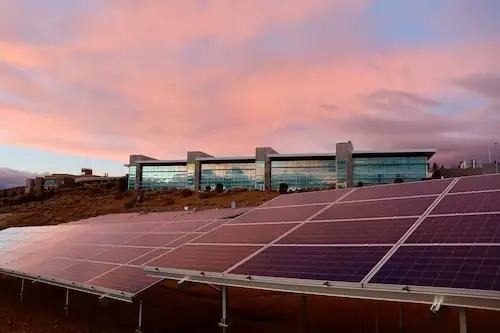Green building design and construction practices are becoming increasingly important as the world looks for ways to reduce carbon emissions and combat climate change. HVAC (heating, ventilation, and air conditioning) systems play a critical role in building energy use and are a significant source of greenhouse gas emissions. However, there are sustainable cooling and heating options available that can reduce the environmental impact of HVAC systems as well as providing cost savings and other benefits.
When it comes to implementing sustainable cooling and heating options, it is important to work with experienced providers of HVAC services who can help assess a building’s needs and recommend the most effective and efficient green HVAC solutions. This article will explore some green alternatives for cooling and heating options for HVAC systems.
Ground Source Heat Pumps (GSHPs)
One of the most promising sustainable heating options for HVAC systems is GSHPs, also known as geothermal heating and cooling systems. GSHPs use the stable temperature of the earth to provide heating and cooling, making them much more energy-efficient than traditional HVAC systems that rely on burning fossil fuels or using electric resistance heating. According to the U.S. Department of Energy, GSHPs can be up to 65% more efficient than traditional HVAC systems.
Air Source Heat Pumps (ASHPs)
Another sustainable heating option for green HVAC systems is ASHPs, which work by absorbing heat from the outside air and transferring it to the building. ASHPs are more common than GSHPs and can be a good option for buildings with smaller heating and cooling loads or in areas with milder climates. They are also less expensive to install than GSHPs and require less space, making them a good option for retrofitting existing buildings.
Like GSHPs, ASHPs can be much more efficient than traditional HVAC systems, particularly when used in conjunction with other energy-efficient building strategies like insulation and air sealing. ASHPs can also provide both heating and cooling, which can be useful in areas with variable climate conditions.
Solar Thermal Heating
Solar thermal heating is another sustainable heating option for green HVAC systems that can be used in conjunction with other heating and cooling strategies. Solar thermal heating uses the heat from the sun to warm a fluid, which is then used to provide hot water or space heating in the building. Solar thermal systems are most effective in areas with a lot of sun exposure and are less expensive to install than some other sustainable heating options.
Cooling Options
In addition to sustainable heating options, HVAC systems can also include sustainable cooling options such as the use of natural ventilation, which can provide cooling without the use of mechanical cooling systems by using natural airflow to circulate fresh air through the building and remove hot air, reducing the need for air conditioning. Another sustainable cooling option is the use of evaporative cooling, which uses the natural process of evaporation to cool the air. This can be particularly effective in dry climates, where the air is already relatively dry and evaporation is more efficient.
By choosing these options for green HVAC systems, we can reduce our reliance on fossil fuels, save money on energy bills, and create a more sustainable future for ourselves and future generations.
